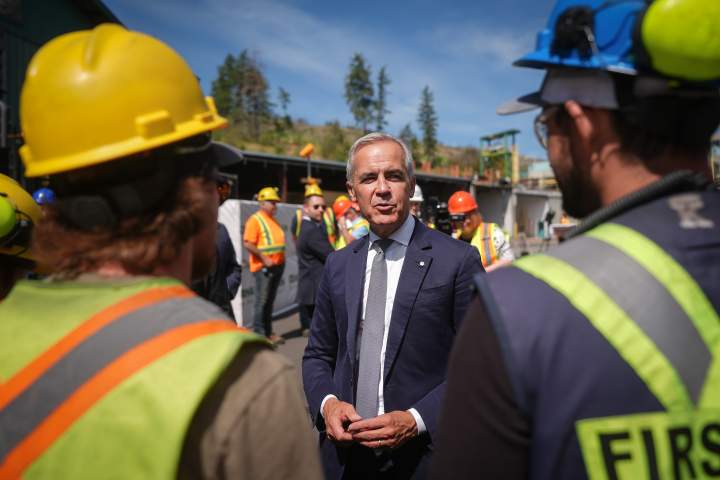Top Stories
Carney Announces Major Cuts to Steel Imports, Boosts Canadian Industry

URGENT UPDATE: Prime Minister Mark Carney has just announced a significant reduction in imported foreign steel, a move aimed at revitalizing Canada’s struggling steel sector. Effective immediately, Ottawa will slash imports from countries without a free trade agreement with Canada to just 20 percent of last year’s levels, opening up over $850 million in new domestic demand for Canadian steel.
In a bold strategy to protect local industries, Carney revealed that Canada will also reduce tariff-free steel imports from non-CUSMA partners from 100 percent to 75 percent of 2024 levels. Additionally, the government will impose a global 25 percent tariff on targeted imported steel derivative products, including wind towers and prefabricated buildings, in a bid to stimulate demand for Canadian-made steel.
These crucial changes come as the Canadian steel industry faces ongoing challenges following harsh tariffs imposed by U.S. President Donald Trump, who enacted a 50 percent tariff on Canadian steel in June. The steel sector has been under pressure, particularly after the U.S. cut off trade talks last month due to Ontario’s advertisements that highlighted the negative impact of tariffs using remarks from former U.S. President Ronald Reagan.
Earlier this year, in July, Carney had already reduced import quotas from countries lacking free trade agreements to 50 percent of 2024 levels, along with a 50 percent tariff on any imports exceeding the quota. These escalating measures signify the government’s commitment to support Canadian industries amid turbulent trade relations.
This latest announcement marks a critical moment for the Canadian steel and lumber sectors, which have long battled against U.S. tariffs, including a steep 45 percent tax on softwood lumber. The urgency of these developments cannot be overstated, as they are set to reshape the landscape for Canadian manufacturers and workers.
As the situation evolves, industry stakeholders and citizens alike will be closely monitoring these changes. Next steps include potential reactions from U.S. officials and further implications for trade relations between the two countries.
Stay tuned for more updates as this situation develops.
-

 Politics3 weeks ago
Politics3 weeks agoSecwepemc First Nation Seeks Aboriginal Title Over Kamloops Area
-

 World4 months ago
World4 months agoScientists Unearth Ancient Antarctic Ice to Unlock Climate Secrets
-

 Entertainment5 months ago
Entertainment5 months agoTrump and McCormick to Announce $70 Billion Energy Investments
-

 Lifestyle4 months ago
Lifestyle4 months agoTransLink Launches Food Truck Program to Boost Revenue in Vancouver
-

 Science5 months ago
Science5 months agoFour Astronauts Return to Earth After International Space Station Mission
-

 Technology3 months ago
Technology3 months agoApple Notes Enhances Functionality with Markdown Support in macOS 26
-

 Top Stories2 months ago
Top Stories2 months agoUrgent Update: Fatal Crash on Highway 99 Claims Life of Pitt Meadows Man
-

 Lifestyle3 months ago
Lifestyle3 months agoManitoba’s Burger Champion Shines Again Amid Dining Innovations
-

 Politics4 months ago
Politics4 months agoUkrainian Tennis Star Elina Svitolina Faces Death Threats Online
-

 Sports5 months ago
Sports5 months agoSearch Underway for Missing Hunter Amid Hokkaido Bear Emergency
-

 Politics4 months ago
Politics4 months agoCarney Engages First Nations Leaders at Development Law Summit
-

 Technology5 months ago
Technology5 months agoFrosthaven Launches Early Access on July 31, 2025





















